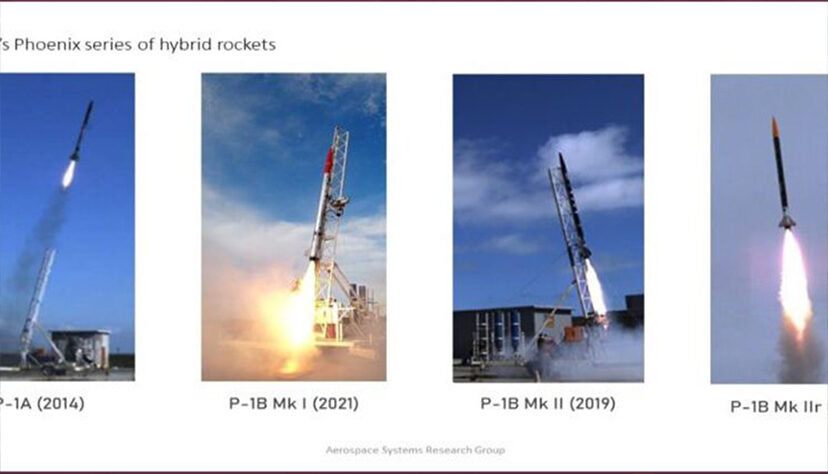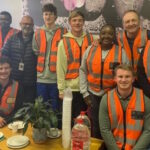Recently, the Department of Mechanical and Mechatronic Engineering and the Cape Chapter of the Aeronautical Society of South Africa hosted the UKZN’s Aerospace Systems Research Group (ASReG) for a presentation of their work.
Academics, students, local aerospace companies and delegates from government and related industry partners came together on Wednesday, 19 October 2022 in the Reitz Hall, Stellenbosch where the research group presented: “How South Africa Can Get to Space and Compete When it Arrives”.
The Aeronautical Society of South Africa (since 1911) is a Division of the Royal Aeronautical Society, whose membership includes some of the largest aerospace organizations in the world. The society carries out accreditation on behalf of the Engineering Council of South Africa. Membership of the Society provides a path to professional engineering registration.
ASReG is recognised as South Africa’s leading indigenous space launch research programme. Its most recent achievement was successfully test firing the ABLE liquid fuel rocket engine at the Denel Overberg Test Range. This is one of the most powerful liquid rocket engines ever fired by a university.
Professor Glen Snedden, Academic Leader of UKZN Mechanical Engineering and Vice-President of the Aeronautical Society of South Africa (AeSSA) introduced the presentation. As Vice-President of AeSSA he is at the forefront in advancing aerospace technology and research in South Africa and globally. He is also one of the co-leaders of the largest South African university research group in rocket propulsion.
Prof Snedden says: “Capacity starts with people; it is necessary to grow our own timber.” He told us about the areas of specialisation, how many staff members and postgraduate students ASReG has. ASReG’s talent pipeline starts by identifying students at undergraduate levels, and especially in their final year design projects. Safety, cost effectiveness and low risk operations are vital for the sub-orbital rocket launches that ASReG uses for human capital development and applied research.
Prof Snedden was also joined by Stellenbosch Alumni Professor Michael Brooks and Dr Jean Pitot.
Dr Pitot provided the key technical information regarding the SAFFIRE liquid rocket engine programme, which is intended to develop an orbital launch vehicle engine, and the associated carrier rocket, capable of propelling 200 kg of payload to space from a South African launch site. He informed us about “the “Newspace” phenomenon”, which is an era of opportunity in which the global industry works independently of government. He also addressed related topics on how to unlock the space economy and drive the revolution of opportunity, the technical enablers associated with commercial launch, the steps needed to get South Africa to space and how much it will cost to develop a launch vehicle.
Professor Mike Brooks echoed the need for commitment, for people devoted to being in the program and funding to advance from where they currently are. Pragmatic next steps could lead to marketing, selling and commercialisation of aerospace technology, systems, design, and material, he says.
On 8 March 2021, the suborbital Phoenix -Mk II rocket was successfully launched to a new all-Africa altitude record of 18 km. This single-stage unguided ballistic sounding rocket was powered by a PV-3 hybrid rocket motor. The project was funded by the Department of Science and Innovation (DSI).
The Space Propulsion Programme offered by the dynamic UKZN team focuses on the development of skills, suborbital launch vehicle design, testing and research. The programme enables the development of key expertise in the areas of rocket propulsion technology, launch vehicle design, flight dynamics modeling as well as the development of appreciable scarce skills in engineering, while building unique relationships between universities and industry partners in the field.
References: Aerospace UKZN
ASReg Group presentation
AeSSA overview






